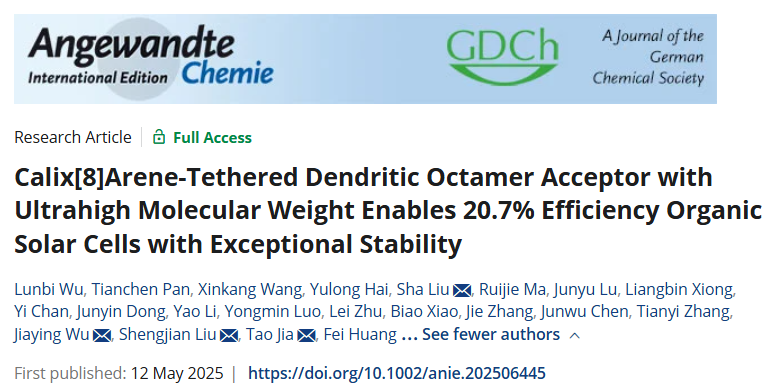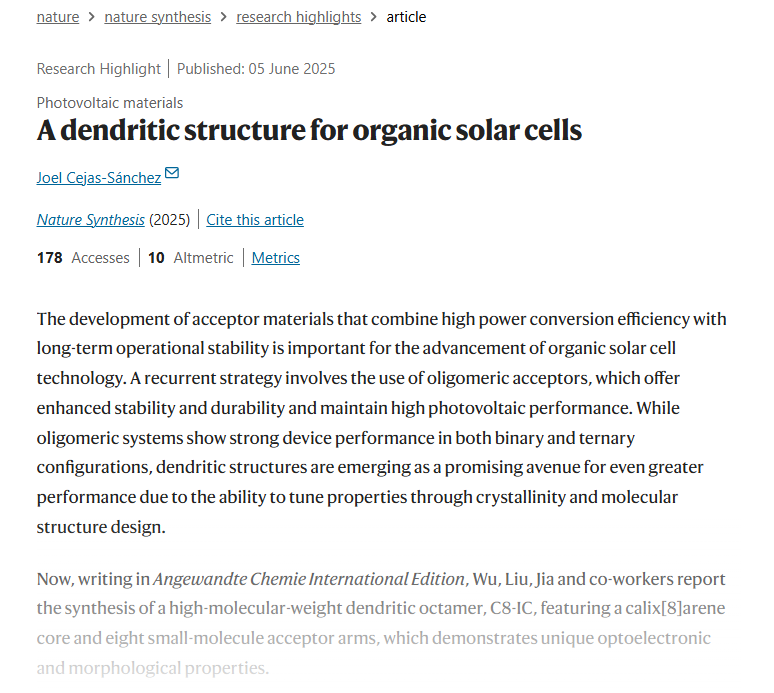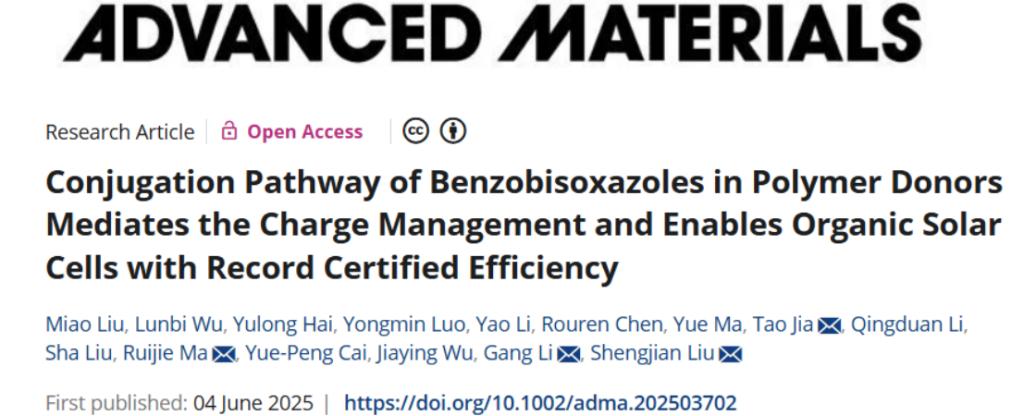On May 12, the research team led by Associate Professor Tao Jia from the School of Optoelectronic Engineering at Guangdong Polytechnic Normal University reported a major breakthrough in the molecular design of dendritic non-fullerene acceptors for organic solar cells. Their work, titled “Calix[8]arene-Tethered Dendritic Octamer Acceptor with Ultrahigh Molecular Weight Enables 20.7% Efficiency Organic Solar Cells with Exceptional Stability,” was published in Angewandte Chemie International Edition (JCR Q1, Impact Factor: 16.1). The study introduces a calix[8]arene-based dendritic octamer acceptor with an ultrahigh molecular weight, enabling a power conversion efficiency of 20.7% alongside outstanding thermal and morphological stability. Lunbi Wu, a graduate student from the Class of 2023, is the first author; Associate Professor Jia is the corresponding author; and Guangdong Polytechnic Normal University is the primary institutional affiliation.

The team designed and synthesized a dendritic acceptor molecule, named C8-IC, based on a calix[8]arene core. This molecule features an ultrahigh molecular weight exceeding 14000 g/mol and a monodisperse molecular structure. Its unique dendritic architecture imparts multidimensional charge transport pathways, strengthens intermolecular interactions, suppresses molecular diffusion, and finely tunes the crystallinity of the active layer. Organic solar cells incorporating C8-IC achieved power conversion efficiencies of 18.7% in binary and 20.7% in ternary systems, while also exhibiting exceptional thermal and morphological stability.
On June 5, Dr. Joel Cejas Sánchez, Deputy Editor of the Cross-Journal Editorial Team at Springer Nature, published a Research Highlight in Nature Synthesis, providing a systematic introduction and expert commentary that recognized the innovation and academic significance of this work.

In addition, Associate Professor Jia’s team, in collaboration with Professor Shengjian Liu from South China Normal University, has achieved significant progress in the design of polymer donor materials for polymer solar cells. On June 4, their study titled “Conjugation Pathway of Benzobisoxazoles in Polymer Donors Mediates the Charge Management and Enables Organic Solar Cells with Record Certified Efficiency” was published in Advanced Materials (JCR Q1, Impact Factor: 27.4). Lunbi Wu, a graduate student from the School of Optoelectronic Engineering, is a co-first author, with Associate Professor Tao Jia as the corresponding author. Guangdong Polytechnic Normal University is listed as a co-completing institution.

The publication of these papers underscores the remarkable achievements of the School of Optoelectronic Engineering in graduate education, showcasing the school’s ongoing innovation and excellence in the frontier field of organic optoelectronic materials and devices. By engaging in high-level research projects, graduate students have received comprehensive training in scientific reasoning, experimental techniques, teamwork, and academic communication. This reflects the school’s educational philosophy of integrating research with teaching and promoting learning through research. Such an approach has laid a solid foundation for cultivating high-caliber, innovative scientific talent.